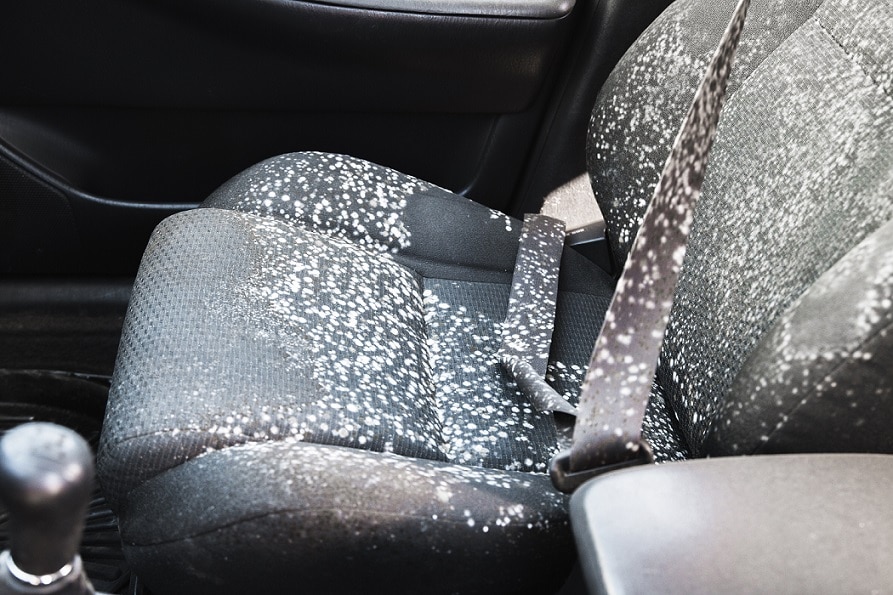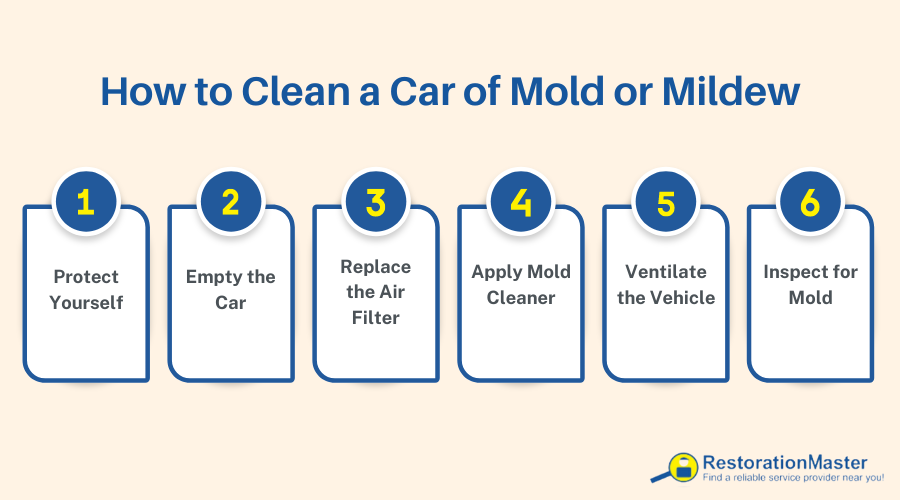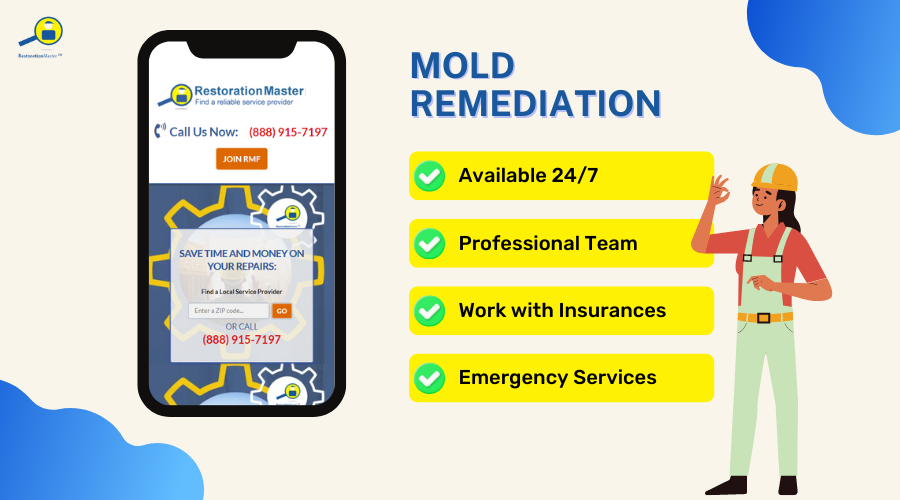How to Clean a Car of Mold or Mildew

MoldMold is a type of fungus that grows in damp or humid conditi... More and mildewMildew is a type of fungus that grows on damp surfaces, typi... More can invade your car, especially in humid conditions. They can grow on fabrics, and surfaces, and even create a musty smell, which is not just unpleasant but can also affect your health. It is important to keep your car ventilated, especially if you live in a region that gets a lot of rain or humidityHumidity is the amount of moisture or water vapor present in... More. MoldMold is a type of fungus that grows in damp or humid conditi... More can grow on the steering wheel, across your dashboard, cupholders, and even on the seats.
The worst case is if moldMold is a type of fungus that grows in damp or humid conditi... More has spread throughout your car’s ventilationVentilation is the process of exchanging or circulating air ... More system. In this case, a mold removal expert should be contacted.
If you notice moldMold is a type of fungus that grows in damp or humid conditi... More in your car, it’s important to address it quickly. This article will explain how you can clean a car of moldMold is a type of fungus that grows in damp or humid conditi... More.
Identifying the Causes of Mold Growth in Cars
MoldMold is a type of fungus that grows in damp or humid conditi... More growth in cars is a concern that often goes unnoticed, primarily due to the warm and moisture-rich environment inside the vehicle. Understanding the various factors that contribute to this problem is crucial for car owners.
One of the primary causes of moldMold is a type of fungus that grows in damp or humid conditi... More in cars is the accumulation of moisture. Spilled beverages, wet clothing, or even high humidityHumidity is the amount of moisture or water vapor present in... More from the outside can create a breeding ground for moldMold is a type of fungus that grows in damp or humid conditi... More. Areas that are often overlooked, such as under the carpets, in seat cushions, and within the air conditioning system, are particularly susceptible. If not addressed, moldMold is a type of fungus that grows in damp or humid conditi... More can thrive in these concealed locations, leading to unpleasant odors and potential health risks.
Poor ventilationVentilation is the process of exchanging or circulating air ... More is another significant factor that encourages moldMold is a type of fungus that grows in damp or humid conditi... More growth. Vehicles that sit unused for extended periods, especially in humid climates, tend to trap moisture and inhibit airflow. This stagnant environment is perfect for moldMold is a type of fungus that grows in damp or humid conditi... More sporesSpores are microscopic reproductive units of fungi or mold t... More to settle and multiply. To combat this, it’s essential to change the car’s air filter regularly, which helps maintain airflow and reduce humidityHumidity is the amount of moisture or water vapor present in... More levels inside.
Lastly, a lack of regular maintenanceMaintenance is the routine care, inspection, and repair of a... More exacerbates the moldMold is a type of fungus that grows in damp or humid conditi... More problem. Failing to roll down windows or open doors periodically leaves moisture trapped inside. By being aware of these causes and taking proactive measures, car owners can effectively work towards ensuring a mold-free environment in their vehicles.
Is a Car With Mold Salvageable?
If you find that the vehicle is covered in a significant amount of moldMold is a type of fungus that grows in damp or humid conditi... More across the interior, seats, and flooring, it may not be worth the effort to clean.
This is primarily because it is likely the moldMold is a type of fungus that grows in damp or humid conditi... More has spread throughout the ventilationVentilation is the process of exchanging or circulating air ... More system and other components. These cases require professional mold remediationMold remediation is the process of identifying, removing, an... More services.
If the amount of moldMold is a type of fungus that grows in damp or humid conditi... More does not appear to major, you can follow this guide for mold removal. However, there is no guarantee the moldMold is a type of fungus that grows in damp or humid conditi... More will not return, as it requires complete eradication to successfully remove.

How to Clean a Car of Mold
The first step is always safety.
MoldMold is a type of fungus that grows in damp or humid conditi... More sporesSpores are microscopic reproductive units of fungi or mold t... More may be toxic and can cause harmful effects on your health. Symptoms include itchy eyes, scratchy throat, and respiratory issues.
Protect Yourself
When faced with moldMold is a type of fungus that grows in damp or humid conditi... More or mildewMildew is a type of fungus that grows on damp surfaces, typi... More in your car, prioritizing your health is paramount. MoldMold is a type of fungus that grows in damp or humid conditi... More sporesSpores are microscopic reproductive units of fungi or mold t... More can be harmful when inhaled or come into contact with your skin. Here’s how to ensure you are adequately protected before tackling the task:
- Use a MoldMold is a type of fungus that grows in damp or humid conditi... More Mask: A properly rated moldMold is a type of fungus that grows in damp or humid conditi... More mask, such as an N95 respirator, is essential. This type of mask filters out fine particles and will help prevent you from inhaling moldMold is a type of fungus that grows in damp or humid conditi... More sporesSpores are microscopic reproductive units of fungi or mold t... More.
- Wear Gloves: Protect your hands with disposable gloves. LatexLatex is a natural or synthetic rubber material commonly use... More or nitrile gloves are ideal as they provide a barrier between your skin and any moldMold is a type of fungus that grows in damp or humid conditi... More or cleaning chemicals you may use.
- Protective Eyewear: Consider wearing safety goggles to protect your eyes from moldMold is a type of fungus that grows in damp or humid conditi... More sporesSpores are microscopic reproductive units of fungi or mold t... More and from any cleaning products that might irritate your eyes.
- Ventilate the Area: Ensure the car is parked in a well-ventilated area or work outdoors if possible. Open the windows and doors to help reduce the concentration of moldMold is a type of fungus that grows in damp or humid conditi... More sporesSpores are microscopic reproductive units of fungi or mold t... More in the vehicle during your cleaning process.
- Avoid Breach of MoldMold is a type of fungus that grows in damp or humid conditi... More: If the moldMold is a type of fungus that grows in damp or humid conditi... More is extensive or severe, consider consulting a professional. Attempting to clean large areas with heavy moldMold is a type of fungus that grows in damp or humid conditi... More growth can disturb the sporesSpores are microscopic reproductive units of fungi or mold t... More and cause them to spread further, increasing your risk of exposure.
Empty the Car
Next, it is time to empty the car as completely as you can. That means seats, mats, and any personal belongings or other items. All these contents may have moldMold is a type of fungus that grows in damp or humid conditi... More and should be cleaned individually.
Replace the Air Filter
Remove and replace your car’s air filter. You will need to look up your car’s make and model to find these instructions online, but the air filter is typically located around the glovebox compartment.
Apply Mold Cleaner
Use a 50/50 solutionA solution is a homogeneous mixture of two or more substance... More of white vinegar and water to spray directly on any moldMold is a type of fungus that grows in damp or humid conditi... More you can see in the car. Any alternative commercial moldMold is a type of fungus that grows in damp or humid conditi... More removal products can also suffice. Then, clean the entirety of the car interior with commercial interior cleaner products and hot water.
Ventilate the Vehicle
Close all windows in the vehicle and crank the heat on the max setting for about 30-45 minutes. Acquire a dehumidifierA dehumidifier is a device that removes excess moisture from... More from your local hardware store. These typically can be rented. Set up your dehumidifierA dehumidifier is a device that removes excess moisture from... More to run within the vehicle until it is no longer collecting moisture.
Inspect for Mold
Leave the car to sit for 2 days and then inspect the interior for any moldMold is a type of fungus that grows in damp or humid conditi... More. A blacklight can help spot invisible moldMold is a type of fungus that grows in damp or humid conditi... More on surfaces.

Professional Mold Removal
When it comes to cars, a professional mold removal team is always the best choice since you don’t know how far the moldMold is a type of fungus that grows in damp or humid conditi... More has spread
Contact a mold remediationMold remediation is the process of identifying, removing, an... Moreremediation companyA remediation company is a business specializing in cleaning... More if you discover moldMold is a type of fungus that grows in damp or humid conditi... More in your vehicle.












